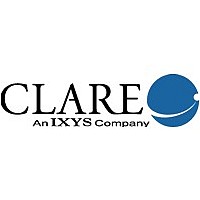M-8870-01SM Clare, M-8870-01SM Datasheet - Page 3

M-8870-01SM
Manufacturer Part Number
M-8870-01SM
Description
IC RECEIVER DTMF CMOS LP 18-SOIC
Manufacturer
Clare
Datasheet
1.M-8870-02.pdf
(9 pages)
Specifications of M-8870-01SM
Function
DTMF Receiver
Number Of Circuits
1
Voltage - Supply
4.75 V ~ 5.25 V
Current - Supply
3mA
Power (watts)
35mW
Operating Temperature
-40°C ~ 85°C
Mounting Type
Surface Mount
Package / Case
*
Includes
Decoder, Dial Tone Suppression
Lead Free Status / RoHS Status
Lead free / RoHS Compliant
Interface
-
Available stocks
Company
Part Number
Manufacturer
Quantity
Price
Part Number:
M-8870-01SM
Manufacturer:
TELTONE
Quantity:
20 000
Rev. 3
Functional Description
M-8870 operating functions (see block diagram on
page 1) include a bandsplit filter that separates the
high and low tones of the received pair, and a digital
decoder that verifies both the frequency and duration
of the received tones before passing the resulting 4-bit
code to the output bus.
Filter
The low and high group tones are separated by apply-
ing the dual-tone signal to the inputs of two 6th order
switched capacitor bandpass filters with bandwidths
that correspond to the bands enclosing the low and
high group tones. The filter also incorporates notches
at 350 and 440 Hz, providing excellent dial tone rejec-
tion. Each filter output is followed by a single-order
switched capacitor section that smooths the signals
prior to limiting. Signal limiting is performed by high-
gain comparators provided with hysteresis to prevent
detection of unwanted low-level signals and noise.
The comparator outputs provide full-rail logic swings
at the frequencies of the incoming tones.
Decoder
The M-8870 decoder uses a digital counting tech-
nique to determine the frequencies of the limited tones
and to verify that they correspond to standard DTMF
frequencies. A complex averaging algorithm is used to
protect against tone simulation by extraneous signals
(such as voice) while tolerating small frequency varia-
tions. The algorithm ensures an optimum combination
of immunity to talkoff and tolerance to interfering sig-
nals (third tones) and noise. When the detector rec-
ognizes the simultaneous presence of two valid tones
(known as signal condition), it raises the Early
Steering flag (ESt). Any subsequent loss of signal
condition will cause ESt to fall.
Basic Steering Circuit
www.clare.com
Single-Ended Input Configuration
Steering Circuit
Before a decoded tone pair is registered, the receiver
checks for a valid signal duration (referred to as char-
acter-recognition-condition). This check is performed
by an external RC time constant driven by ESt. A logic
high on ESt causes VC (see block diagram on page 1)
to rise as the capacitor discharges. Provided that sig-
nal condition is maintained (ESt remains high) for the
validation period (t
of the steering logic to register the tone pair, thus latch-
ing
Characteristics on page 2) into the output latch. At this
point, the GT output is activated and drives V
GT continues to drive high as long as ESt remains
high. Finally, after a short delay to allow the output
latch to settle, the delayed steering output flag (StD)
goes high, signaling that a received tone pair has been
registered. The contents of the output latch are made
available on the 4-bit output bus by raising the three-
state control input (OE) to a logic high. The steering
circuit works in reverse to validate the interdigit pause
between signals. Thus, as well as rejecting signals too
short to be considered valid, the receiver will tolerate
signal interruptions (dropouts) too short to be consid-
ered a valid pause. This capability, together with the
ability to select the steering time constants externally,
allows the designer to tailor performance to meet a
wide variety of system requirements.
its
corresponding
GTF
), V
C
reaches the threshold (V
4-bit
code
(see
M-8870
C
to V
TSt
DC
DD
3
)
.












